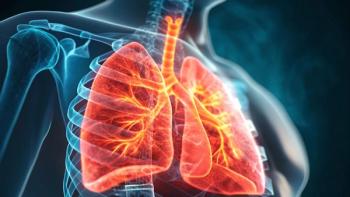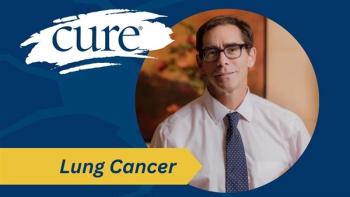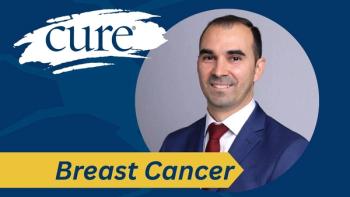
CAR T Transforms Treatment Landscape for Blood Cancers

Key Takeaways
- CAR T-cell therapy modifies a patient's immune cells to target cancer, offering potential cures for blood cancers like lymphoma and myeloma.
- Up to 40% of lymphoma patients may achieve remission after a single CAR T infusion, making it a transformative treatment option.
CAR T-cell therapy may cure up to 40% of patients with lymphoma and is an option for those who can’t receive transplants, says Dr. André Goy.
CAR T-cell therapy has been a transformative advance in the treatment of blood cancers, says Dr. André Goy, who leads the lymphoma division at John Theurer Cancer Center and serves as physician in chief of Oncology Care Transformation Services at Hackensack Meridian Health.
Originally approved for aggressive lymphoma and multiple myeloma, CAR T works by collecting a patient’s own immune cells, modifying them in a lab to target cancer, and then reinfusing them to attack the disease. Unlike traditional treatments, CAR T can result in long-lasting remissions, with up to 40% of patients with lymphoma potentially cured after a single infusion, according to Goy.
Goy emphasizes that this therapy is especially valuable for patients who are not eligible for transplants or who have exhausted other options. Even individuals in their 80s can be considered for CAR T, which would not be possible with other treatment regimens.
He shared the story of Mark Daniels, a retired Air Force pilot who relapsed with an aggressive lymphoma years after his initial diagnosis. Despite being fit, he wasn’t a good candidate for intensive chemotherapy. After receiving CAR T, he achieved a complete remission and returned to flying.
Goy also stressed the importance of supportive care in successful outcomes. From nurse navigators to home health services and caregiver education, having a strong support system helps patients through the process and improves both safety and recovery.
CURE: Can you walk us through what patients should know about CAR T therapy, from collection to infusion to recovery?
Goy: I think it's a really important therapy. This has been the most game-changing treatment in cancer over the past three decades. It was first approved for lymphoma and myeloma, and studied almost 10 years ago, so we now have a lot of experience with CAR T. For our audience: this therapy involves collecting a patient’s own cells, just like we collect platelets or red blood cells, and then manufacturing them by inserting a receptor into the cells. That’s why it’s called CAR T — chimeric antigen receptor. The receptor is placed on those cells, which are genetically modified and grown in a lab, so that once they’re reinfused into the patient, they’ll continue to grow and attack the lymphoma cells.
This is a transformative therapy because one of the first things cancer cells do is put a brake on the immune system — the same immune system that, in all of us, kills cancer cells every day. By genetically modifying those cells, we’re now able to harness the immune system against lymphomas, leukemias, and myeloma.
Take aggressive lymphoma, for example, where CAR T was approved nearly 10 years ago — in 2017. It showed dramatic responses in patients who had no options left after failing conventional chemotherapy and immunotherapy. We participated in the original trials and many that led to approval. These were patients who had failed everything and often couldn’t even undergo a bone marrow transplant, or were too old for one. And yet, they responded — with response rates from 50% to 80% depending on the disease. Roughly 30% to 40% of patients with lymphoma can be cured with a single CAR T infusion. It’s a one-and-done therapy.
We collect the cells from the blood, modify and grow them in a lab, then reinfuse them and monitor the patient closely. Monitoring is critical because once the cells enter the body and recognize the lymphoma cells, they multiply. We want that multiplication — that’s what kills the cancer. Remarkably, some patients take a few months, sometimes up to a year, to go into complete remission. But if they do, many remain in remission and are likely cured. CAR T targeting CD19 is now considered a curative-intent therapy for relapsed or refractory large B-cell lymphoma.
We use CAR T in different types of lymphoma and in myeloma. Again, it’s a game-changer for a population with few remaining options. One last important point: the standard treatment for patients who relapse after chemoimmunotherapy is usually more intensive therapy followed by stem cell transplant — a toxic approach that’s not feasible for patients over their mid-70s. But CAR T can be used into the mid-80s and still achieve cure rates of 30% to 40%. There’s nothing else that can do that in this setting.
How do you determine when a patient is a good candidate for CAR T therapy?
That’s a really important question. I’ll use the example of Mark Daniels, which illustrates this well. Then I’ll speak more generally about how we identify good candidates.
Mark Daniels came to see me almost 20 years ago with a low-grade lymphoma. He didn’t want chemotherapy and qualified for a trial we were running at the time for patients receiving first-line therapy that combined immunotherapy, [Rituxan], with a small molecule. He did very well — so well that he basically disappeared from our care. He’s a retired U.S. Air Force pilot, still flying recreationally, doing acrobatic flying, in great shape and at the gym every day.
Then about two and a half to three years ago, he came back with a very aggressive new lymphoma — a large mass in his abdomen causing pain. Initially, he thought the pain was from overexercising. But a biopsy revealed a high-grade lymphoma. He needed a more intensive regimen, but that would’ve been very toxic for him given his age, even though he was fit. We gave him some chemotherapy to slow the disease, but he had complications due to the tumor’s location, with risks like perforation.
At that point, he wasn’t eager to continue chemotherapy and wanted to give up. I convinced him to try CAR T. He went into complete remission. Not only did he respond well, but he also recovered fully. Now, more than a year out, he’s in remission and back to flying — even acrobatically. It’s a double success: we were able to treat an outstanding patient and also help a veteran who served in Vietnam. If we can give back and improve someone’s life like that, it’s a good day.
What should patients know about the importance of supportive care in achieving successful outcomes?
Any time you’re undergoing intensive therapy — or really, any cancer treatment — support is essential. We have a team here with navigators, home health support, and a strong infrastructure. But patients also need a local ecosystem.
Especially with bone marrow or cell therapies, we want caregivers, family, and friends to be involved. They should attend informational classes, understand the treatment process, and be prepared for what could happen after discharge. That way, they’re not surprised or unprepared if complications arise. Educating caregivers helps demystify the process and reassures the patient. It also improves safety.
In some cases, we treat patients in outpatient apartments next to the hospital, so they’re close by if any issues occur. That also helps make the process easier. Engaging a patient’s ecosystem — their support network — is important in every cancer treatment, because it improves the experience and helps with recovery.
Transcript has been edited for clarity and conciseness.
For more news on cancer updates, research and education,




